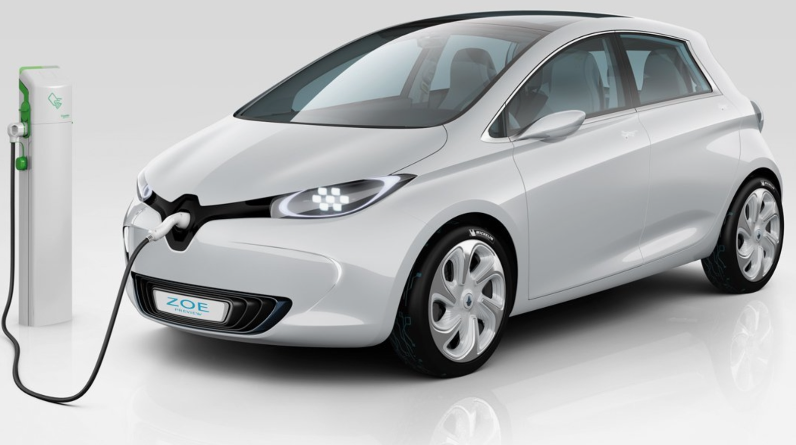The Environmental Impact of Traditional vs. Electric Cars

The automotive industry is undergoing a significant transformation, with electric vehicles (EVs) gaining momentum as a cleaner alternative to traditional internal combustion engine (ICE) cars. This shift is driven by increasing awareness of environmental issues and the need to reduce greenhouse gas emissions. In this article, we will explore the environmental impact of traditional versus electric cars, focusing on various aspects such as emissions, energy consumption, and resource use.
The Emissions Debate: Traditional Cars vs. Electric Vehicles
Traditional Cars and Their Emission Footprint
Traditional cars, powered by internal combustion engines (ICE), have been the backbone of personal transportation for over a century. However, they come with a significant environmental cost. These vehicles emit carbon dioxide (CO2), nitrogen oxides (NOx), and particulate matter (PM) during operation. The combustion of fossil fuels in ICE cars releases CO2, a major greenhouse gas contributing to global warming. Additionally, NOx and PM contribute to air pollution, which has adverse effects on human health and the environment.
As more people seek to reduce their carbon footprint, companies offering cash for unwanted cars services Logan are seeing increased demand. Many owners are choosing to dispose of their old ICE vehicles in favor of cleaner alternatives. This shift not only helps reduce local air pollution but also lowers overall greenhouse gas emissions.
Electric Vehicles: A Cleaner Alternative?
Electric vehicles (EVs) present a promising alternative to traditional cars. They operate on electricity stored in batteries, producing zero tailpipe emissions. This means that driving an EV does not directly release CO2 or pollutants into the atmosphere. However, it’s essential to consider the entire lifecycle of EVs to assess their environmental impact fully.
While EVs are cleaner during operation, the production of their batteries involves mining for raw materials such as lithium, cobalt, and nickel. The extraction and processing of these materials can have environmental consequences. Additionally, the source of the electricity used to charge EVs plays a crucial role. If the electricity comes from fossil fuels, the overall environmental benefits of driving an EV may be diminished.
Energy Consumption: Comparing Traditional and Electric Vehicles
Fuel Efficiency of Traditional Cars
Fuel efficiency is a critical factor in assessing the environmental impact of traditional cars. Vehicles with higher fuel efficiency consume less fuel for the same distance traveled, resulting in lower emissions and reduced dependence on fossil fuels. However, even the most fuel-efficient ICE cars still rely on gasoline or diesel, contributing to greenhouse gas emissions and environmental degradation.
As environmental awareness grows, many people are opting for alternatives. Companies offering cash for unwanted cars Logan are helping facilitate this transition by providing incentives for individuals to part with their old, less efficient vehicles.
Electric Vehicles and Energy Consumption
Electric vehicles are generally more efficient than traditional cars. They convert a higher percentage of the energy from their batteries into motion compared to the energy conversion efficiency of ICE cars. This higher efficiency results in fewer energy losses and lower overall energy consumption.
However, the energy consumption of EVs is not without its environmental considerations. The electricity used to charge EVs must be generated, and the environmental impact of electricity generation varies depending on the energy sources. Renewable energy sources such as wind, solar, and hydro power are preferable, as they contribute to reducing the overall carbon footprint of EVs.
Resource Use and Environmental Impact
Resource Extraction for Traditional Cars
The production of traditional cars involves significant resource extraction. Steel, aluminum, and various other materials are required to manufacture vehicle components. The mining, refining, and processing of these materials can lead to habitat destruction, water pollution, and soil degradation.
With the increasing focus on sustainability, many vehicle owners are choosing to sell their old cars. Companies offering cash for unwanted cars Logan are contributing to this trend by providing an eco-friendly disposal option. This practice helps mitigate the environmental impact of resource extraction by promoting recycling and repurposing of vehicle materials.
Resource Extraction for Electric Vehicles
Electric vehicles also require specific raw materials for battery production. Lithium-ion batteries, commonly used in EVs, depend on lithium, cobalt, and nickel. The extraction and processing of these materials can be environmentally intensive. Efforts are being made to improve battery recycling and develop alternative technologies to reduce the reliance on these critical materials.
The environmental impact of resource extraction for EVs can be mitigated through advancements in battery technology and increased recycling rates. Furthermore, as the industry progresses, there is a growing focus on developing more sustainable methods for sourcing and processing these materials.
Lifecycle Analysis: From Production to Disposal
The Production Process of Traditional Cars
The production process for traditional cars involves several stages, including raw material extraction, manufacturing, and assembly. Each stage has its environmental implications. The energy-intensive processes and emissions associated with manufacturing contribute to the overall environmental impact of traditional vehicles.
Many car owners are turning to cash for unwanted cars Logan services to dispose of their old vehicles. This practice helps reduce the number of old, inefficient cars on the road, promoting a cleaner and more sustainable automotive industry.
The Lifecycle of Electric Vehicles
Electric vehicles have a different lifecycle compared to traditional cars. The production phase, particularly the manufacturing of batteries, has a higher environmental impact than that of ICE vehicles. However, the operational phase of EVs is cleaner, as they produce no tailpipe emissions.
As EVs age, their batteries may degrade, leading to concerns about battery disposal and recycling. The development of battery recycling technologies and improved battery life is crucial for minimizing the environmental impact of EVs over their entire lifecycle.
Recycling and Disposal: Managing End-of-Life Vehicles
Recycling Traditional Cars
Recycling traditional cars involves dismantling the vehicle and processing various components for reuse. Metal parts, such as steel and aluminum, can be recycled and repurposed. The recycling of vehicle parts helps reduce the demand for raw materials and minimizes waste.
Cash for Scrap Cars in Caboolture services play a significant role in this process by facilitating the collection and recycling of old vehicles. By providing an incentive for car owners to dispose of their old cars, these services contribute to a more sustainable automotive ecosystem.
Recycling Electric Vehicles
Electric vehicles also undergo recycling at the end of their lifecycle. The recycling of EV batteries is particularly important due to the valuable materials they contain. Advanced recycling technologies are being developed to recover materials like lithium, cobalt, and nickel from used batteries, reducing the need for new raw materials and minimizing environmental impact.
The recycling of EVs and their components is essential for ensuring that the benefits of cleaner operation are not offset by the environmental costs of battery production and disposal.
Conclusion: The Path Forward
The comparison between traditional and electric vehicles highlights the need for a holistic approach to environmental impact. While electric vehicles offer significant advantages in terms of emissions and energy efficiency, their production and resource use must be managed carefully to maximize their environmental benefits.
For individuals looking to transition from traditional to electric vehicles, cash for unwanted cars Logan services provide a practical solution. By promoting the disposal and recycling of old vehicles, these services contribute to a cleaner and more sustainable automotive industry.
As technology advances and renewable energy sources become more prevalent, the environmental impact of both traditional and electric vehicles will continue to evolve. The key to a sustainable future lies in ongoing innovation, responsible resource management, and a commitment to reducing the overall environmental footprint of personal transportation.




